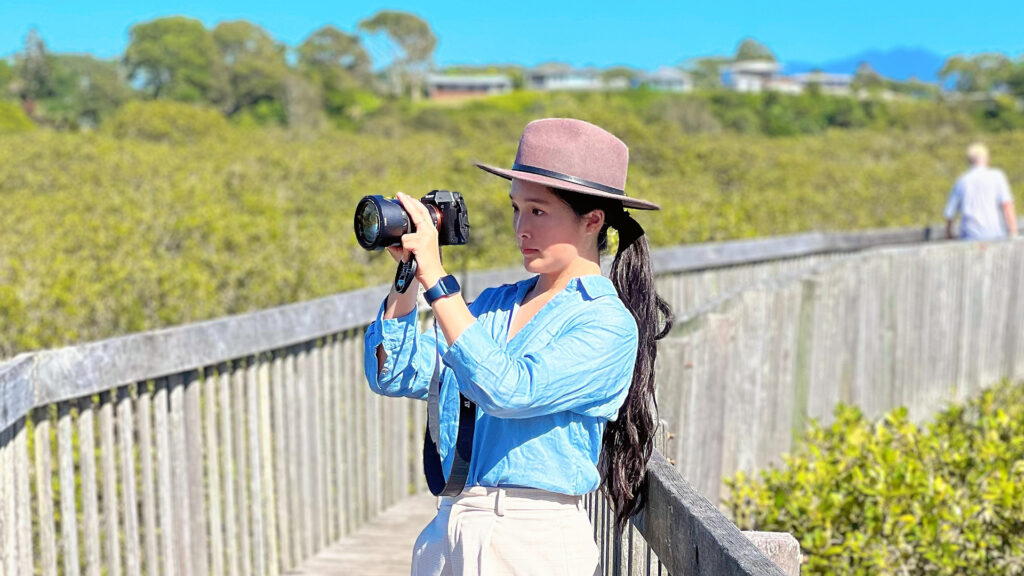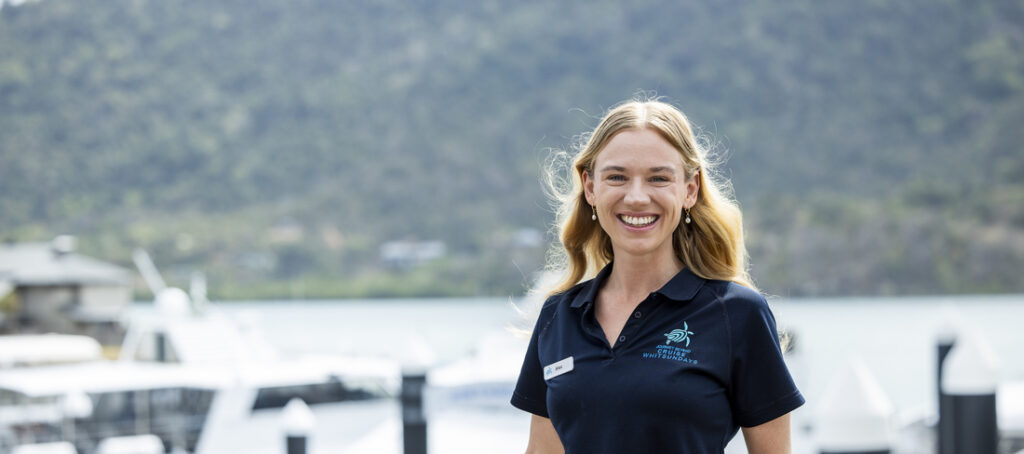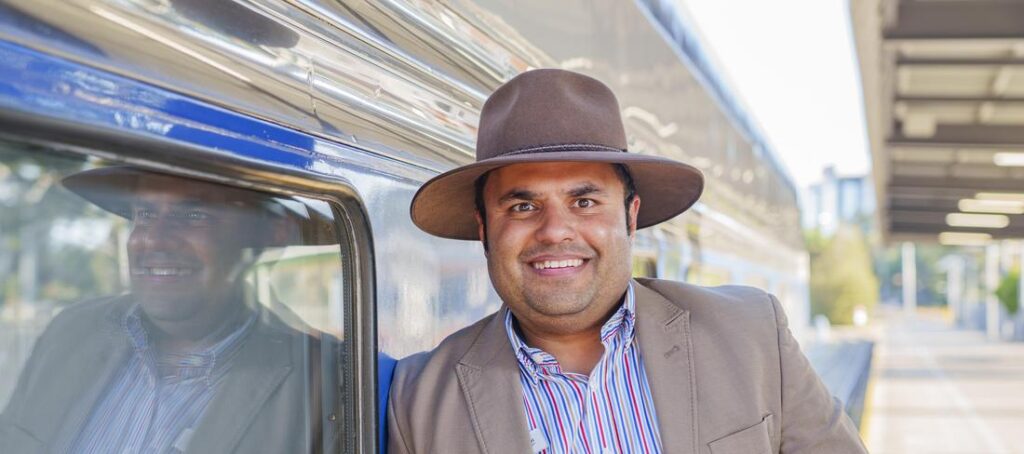Whitsundays-based marine biologist Johnny Gaskell spends his days diving, researching and advocating for protection of the world’s largest coral reef system – the Great Barrier Reef. We took a deep dive into his passion for the ocean, from coral restoration to his fan boy feelings for whip coral shrimp, and why life is better under the sea.
WORDS Victoria Johnson
PICTURES Johnny Gaskell
Johnny Gaskell may just have the best office in the world. Not only does the 38-year-old marine biologist wake up each day on a tiny holiday island in Queensland’s spectacular Whitsundays, but he also dedicates much of his time to exploring the 2300 kilometre long Great Barrier Reef. For Gaskell, it’s not just a job – it’s a lifelong passion that surfaced in the creeks of a small rural Victorian town when he was just a tadpole-catching kid.
“I grew up in a place called Longlea, which is just a few farms and a couple of creeks. “I used to collect water bugs out of the creek, put them in a jar and watch them swim around. There was something about the way they moved through the water, the way everything existed underwater. I found the lack of gravity fascinating. I felt like I should’ve been in there, in that jar.”
A fixation with the ocean was a natural progression for Gaskell. His love affair with the sea began at a beach house on Victoria’s Great Ocean Road. He recalls the rock pools as “mind blowing”, but it was a family trip to the Great Barrier Reef that transformed a hobby into a career.
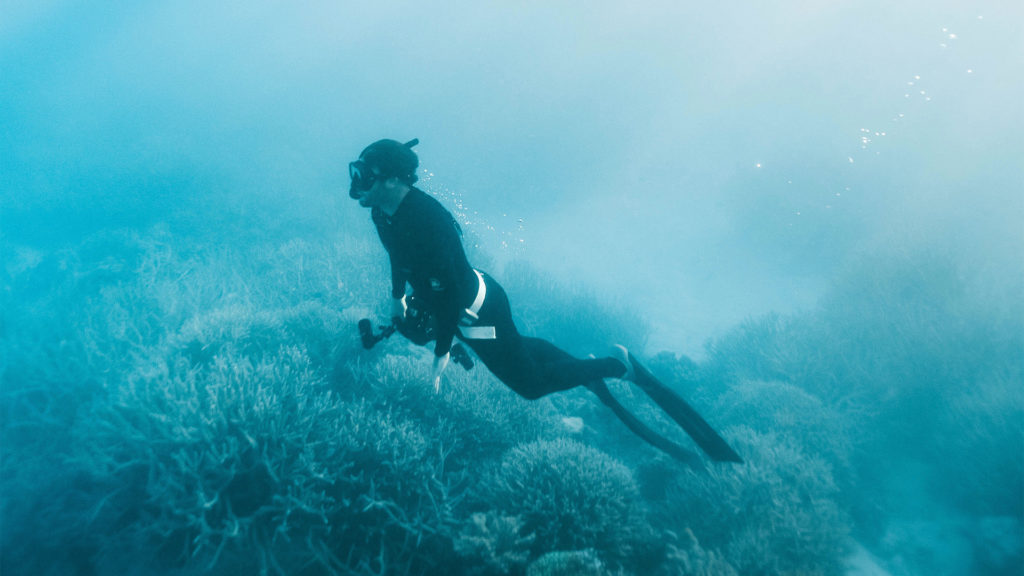
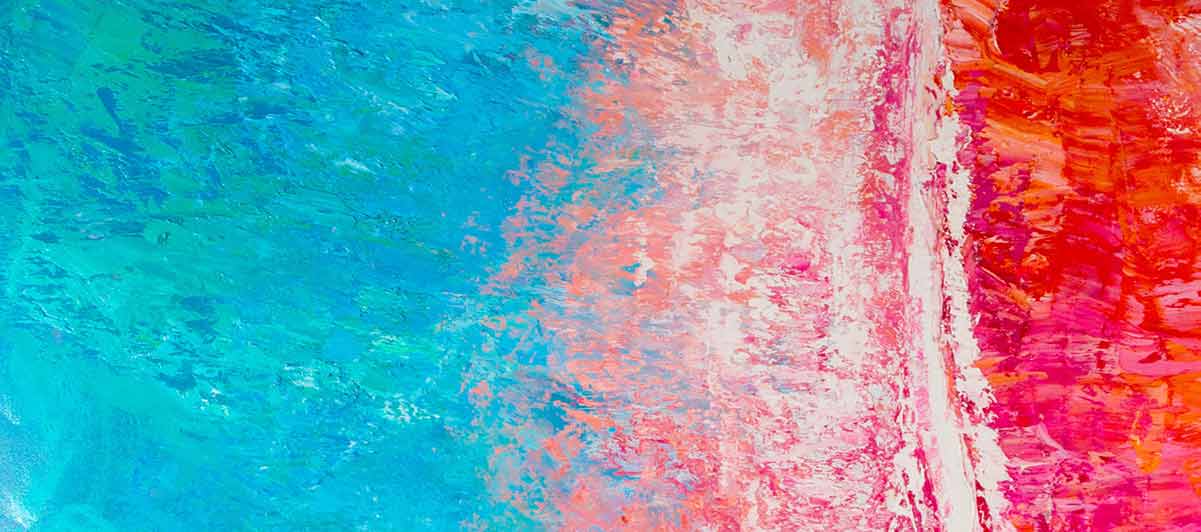
The no-brainer next step for Gaskell was a marine biology degree at Deakin University in Warrnambool, which led to a job in marine education at Melbourne Aquarium. After a stint in Coral Bay, diving Western Australia’s Ningaloo Reef, it was time to answer the ultimate call of the ocean – the Great Barrier Reef. Five and a half years ago, Gaskell packed his dive gear and headed to Queensland’s Whitsundays region, where he submerged himself in the role of Living Reef Manager for Daydream Island Resort.
“I always wanted to move here because I figured I’d never get bored. It was at the back of my mind having all the islands and fringing reefs to explore. I couldn’t get my head around how many there were.”
Gaskell’s day job is to develop and take care of the island’s Living Reef, an open-air coral lagoon, designed to replicate the Great Barrier Reef’s coral lagoons. “Many visitors have only seen aquariums that are underground or inside, using artificial lights. Corals adapt to that closed-system aquarium life – they’re not as realistic in colour and form as they are in the wild. The Living Reef maintains the natural aesthetics.”
Gaskell also takes pride in the educational element of the Living Reef, which is ideal for people who aren’t keen to get their feet wet.
“The Living Reef gives people the opportunity to get up close to some of the local marine life and get an under-standing of how important the balance of the ecosystem in the Whitsundays is. Our experiences are led by marine biologists. We aim to inspire and educate visitors to protect marine life and look after the ocean.”
A typical day for Gaskell starts under water, with a morning check-in on the corals and the critters. He’s reminiscent of a proud father.
“We’ve got some shovelnose rays that have just given birth to ten babies. It’s only the second time in the world that shovelnose rays have been bred in captivity, and the first in Australia.
“We had to jump in and save them from their roommates. Thankfully, the cod – Rod, Todd and Mod – hadn’t cottoned on to what was happening! The cod are big… everything just gets out of their way.”
Gaskell personally gets a kick out of inspiring the new generation to appreciate marine life. “We get families that come back and the kids run onto the island and go ‘where’s Discus?’ or ‘where’s Rod?’. They remember the animals’ names. That’s rewarding, knowing that these kids are going to grow up and appreciate these animals.”
When he’s not lovingly tending to his entourage of marine creatures, Gaskell’s focus is firmly set on restoration of the local reefs as part of a Queensland and Australian Government funded coral recovery initiative, for which Daydream Island was selected as the primary site.
“Three local sites were identified as being cyclone damaged and suitable for assisted recovery. We take small fragments from the healthy host sites, and we set up nurseries where we grow small bits of coral until they’re big enough to be planted into the damaged areas.”

Coral restoration isn’t the only major project on the boil for Gaskell. He’s also working to capture footage at random sites spanning the entire Great Barrier Reef to assess its current state of health.
“There are just so many different views in the media, so many mixed messages. You don’t know who to believe.
“Originally, I just wanted to know for myself. And because we educate so many people on Daydream Island, without first-hand experience you’re really just giving an opinion.” Gaskell’s mission is almost complete. “At all locations, every 150 to 200 kilometres from Lady Elliot in the south to Raine Island in the north, we’ve found healthy coral in some sites. In fact, at a few of them there’s been one hundred per cent coral cover.
“A number of sites have been damaged, but ultimately there is still healthy coral scattered all the way up the reef, which is a relief. But the important message to get across is that it’s not going to stay like this if we don’t act quickly.
“Of the multiple threats to the Great Barrier Reef, climate change is the frightening one. Everyone needs to make small lifestyle changes to reduce their carbon footprint. The only way it’s going to work is if everyone does it.”
Gaskell’s also been instrumental in the exploration of several ‘blue holes’ on the Great Barrier Reef, and has worked with media giants Google and National Geographic to share his findings with the world.
“These blue holes are protected from wave swell and cyclones, so what’s in there remains unchanged. I’ve found crazy coral cover… one hundred per cent coral cover at multiple locations. Due to their positions, these blue holes are recognised as key source reefs. So, when the corals spawn, it has the best chance of repopulating other areas of the Great Barrier Reef.”
As if filming the entire Great Barrier Reef isn’t a big enough project, Gaskell’s spending his spare time cataloguing thousands of photos of marine life species for an app he’s developed to help people identify Australian marine life.
Of all the critters he’s met, Gaskell’s got a soft spot for one in particular – a tiny yellow shrimp.“ They’re called whip coral shrimp. They’re just chilled – they mind their own business and look identical to their habitat. They never leave the whip coral. They’re like, ‘I don’t need to go anywhere, this is it.’
“The Coleman shrimp is also cool – it lives in this tiny urchin, so predators can’t get to it. And the urchins move around, so it’s getting a free ride everywhere. I’ve seen both [whip coral and Coleman shrimp] off Daydream Island.”

Still on his diving bucket list are the Swains in the southern outer Great Barrier Reef and Western Australia’s Rowley Shoals but, for now, Gaskell’s busy exploring his own backyard – the beautiful Whitsundays.
“There’s always more. I think I’ve snorkelled about 55 of the 74 islands here… still 19 to go.” And when asked if there’s any part of his job that he doesn’t like, Gaskell’s answer is simple. “The parts of the day when I’m not in the water.” Life really is better under the sea.
Visit Daydream Island and the LivingReef: daydreamisland.com
Explore the beautiful Whitsundays region: cruisewhitsundays.com
JOHNNY’S TIPS TO PROTECT OUR REEFS
01
Avoid big, long driving trips on your own – take public transport or walk.
02
Try and use your ambient temperature – avoid using air conditioners and heaters.
03
Turn off your lights when they’re not needed.
04
Be conscious of where your food comes from – local produce reduces food miles.
05
Educate yourself on climate change and then educate others.

